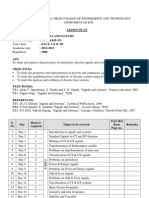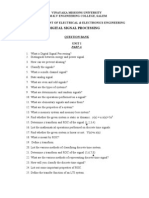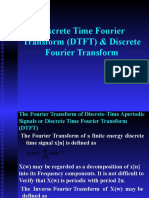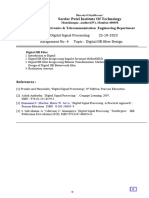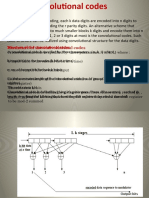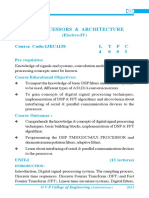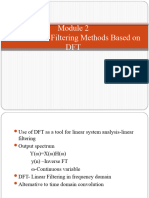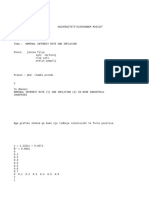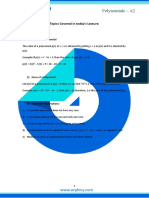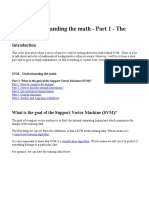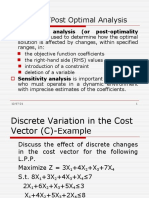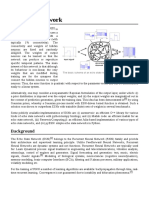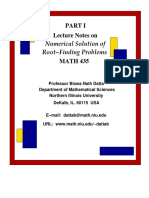0% found this document useful (0 votes)
194 views18 pagesDFT-Based Linear Filtering Techniques
1. The discrete Fourier transform (DFT) can be used to implement linear filtering by performing circular convolution in the frequency domain after zero-padding the input and filter sequences.
2. The overlap-save and overlap-add methods allow linear filtering to be performed on real-time signals in blocks while maintaining continuity between blocks.
3. For circular convolution to equal linear convolution, the DFT size N must be greater than or equal to the length of the input plus the filter minus one (N ≥ L + M - 1).
Uploaded by
Pratik ThakreCopyright
© © All Rights Reserved
We take content rights seriously. If you suspect this is your content, claim it here.
Available Formats
Download as PPT, PDF, TXT or read online on Scribd
0% found this document useful (0 votes)
194 views18 pagesDFT-Based Linear Filtering Techniques
1. The discrete Fourier transform (DFT) can be used to implement linear filtering by performing circular convolution in the frequency domain after zero-padding the input and filter sequences.
2. The overlap-save and overlap-add methods allow linear filtering to be performed on real-time signals in blocks while maintaining continuity between blocks.
3. For circular convolution to equal linear convolution, the DFT size N must be greater than or equal to the length of the input plus the filter minus one (N ≥ L + M - 1).
Uploaded by
Pratik ThakreCopyright
© © All Rights Reserved
We take content rights seriously. If you suspect this is your content, claim it here.
Available Formats
Download as PPT, PDF, TXT or read online on Scribd
/ 18






